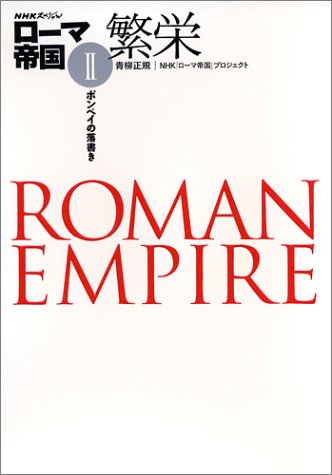8 0 0 0 OA イタリア・ヴェスヴィオ火山北麓のローマ遺跡を埋没した火山性堆積物の層序と特徴
- 著者
- 前野 深 新堀 賢志 金子 隆之 藤井 敏嗣 中田 節也 鎌田 桂子 安田 敦 青柳 正規
- 出版者
- 東京大学
- 雑誌
- 東京大學地震研究所彙報 (ISSN:00408972)
- 巻号頁・発行日
- vol.84, no.4, pp.271-289, 2010-03-29
Burial process of Roman Villa on the northern flank of Mt. Vesuvius, Italy, was reconstructed based on sedimentation processes of laharic deposits newly discovered during 2006-2008 for the extended excavation site in NE to E parts of the Roman Villa. The laharic deposits are distributed on the lower level of the excavation site. The deposits are divided into four subunits, G1-MfL1, G1-DfL1, G1-MfL2, G1-DfL2, based on their sedimentary facies (Mf and Df facies). Mf is characterized by massive and matrix-supported facies, indicating en masse deposition from a laminar flow process, and Df is characterized by stratified and clast supported facies, indicating grain-by-grain aggradation from suspension or traction process. These different types of facies are partially transitional and attributed to variations of sediment/water ratio and internal stress condition inside flows, and may be resulted from an evolutional process, like a flow transformation, of a single debris flow. These laharic deposits directly overlie pyroclastic fallout deposits (G1-Af) in the initial phase of the AD 472 eruption, but are eroded and covered by epiclastic deposits (G1-Mf1, 2, 3, 4 and G1-Df) derived from later- and larger-scale laharic events related to the same eruption. The later laharic deposits include more amounts of basement lava of Mt. Somma, compared with the newly discovered deposits. Characteristics and interpretation of the deposits suggest that lahars just after the 472 eruption came from the north to bury the lower level of buildings and have experienced various types of sedimentation processes. An erosion of the edifice of Mt. Somma may have mainly acted in the later laharic events.
2 0 0 0 OA 我が国のアートコンテンツ発信・利用に関わる現状と問題点
- 著者
- 青柳 正規
- 出版者
- デジタルアーカイブ学会
- 雑誌
- デジタルアーカイブ学会誌 (ISSN:24329762)
- 巻号頁・発行日
- vol.4, no.3, pp.293, 2020-07-01 (Released:2020-08-24)
2 0 0 0 OA 問題提起
- 著者
- 青柳 正規
- 出版者
- デジタルアーカイブ学会
- 雑誌
- デジタルアーカイブ学会誌 (ISSN:24329762)
- 巻号頁・発行日
- vol.2, no.3, pp.260, 2018-06-15 (Released:2018-07-17)
- 著者
- 青柳 正規
- 出版者
- 教育公論社
- 雑誌
- 週刊教育資料 = Educational public opinion
- 巻号頁・発行日
- no.1326, pp.4-9, 2015-01-05
1 0 0 0 OA 紹介
- 著者
- 青柳 正規
- 出版者
- 一般社団法人 日本オリエント学会
- 雑誌
- オリエント (ISSN:00305219)
- 巻号頁・発行日
- vol.29, no.1, pp.161-161, 1986-09-30 (Released:2010-03-12)
1 0 0 0 象形文化の継承と創成に関する研究
本研究プログラムは、人文科学の基礎となる「原資料批判の方法論」に関する再評価と情報科学と連携した新たな資料学の構築を目的としている。この目的遂行のために象形文化資料のデジタル画像とその記載データに基づく象形文化アーカイブを構築する一方で、積聚された文書資料による研究を併用し、歴史空間の復元とその解析について、以下のような成果をあげた。A.古代ローマ文化および日本近世文化を中心とした象形文化アーカイブを構築した。特に、ポンペイとローマに関するアーカイブの完成度の高さは、国際的に注目されている。B.アーカイブ構築過程に置いて、その媒介資料となるアナログ写真とデジタル画像の比較研究を行い、資料の色彩表現に関してはアナログ写真が優れていることを明らかにした。C.象形文化資料の記載について、多言語使用の可能性を研究し、複数の言語システムを活用し、成果をあげた。D.稀覯本などの貴重文献資料のデジタル化を行い、資料の復元研究を行った。たとえば、1800年ごろに活躍した版画家ピラネージの作品をデジタル化し、そこに表された情景を現代と比較し、新古典主義の特質を明らかにした。E.こうした象形文化アーカイブを活用し、共時的研究を行った。特にポンペイに関するアーカイブ構築によりポンペイ遺跡内における地域的特徴を明確にし、新たな社会構造に言及するまでに至った。F.日本近世文化に関しては、回向院周辺の広場的空間復元研究を行った。上記した数々の実績を基礎として、今後も古代ローマに関する象形文化資料を中心とした収集・公開を進め、研究を推進する予定である。このため、現在の研究組織を継続させるのみならず、象形文化研究拠点のハード・ソフトの両面で改善をはかり、国際的な「卓越した研究拠点」として成長させることが期待されよう。
1 0 0 0 繁栄 : ポンペイの落書き
- 著者
- 青柳正規 NHK「ローマ帝国」プロジェクト著
- 出版者
- 日本放送出版協会
- 巻号頁・発行日
- 2004



